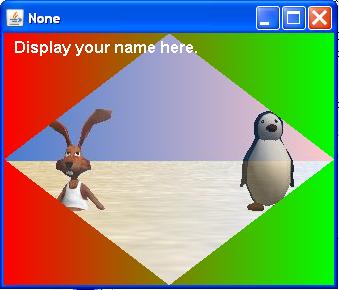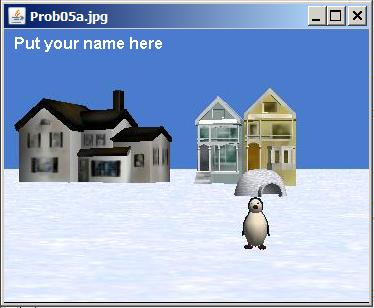| << Chapter < Page | Chapter >> Page > |
| Figure 6 - Question 6. |
|---|
abcde,500
900,fghijkl |
What is the meaning of the following two images?
These images were inserted here simply to insert some space between the questions and the answers to keep them from being visible on the screen at thesame time.

This image was also inserted for the purpose of inserting space between the questions and the answers.

False. This program illustrates incorrect use of the diamond for type inference and will not compile.In Java SE 7 and later, you can replace the type arguments required to invoke the constructor of ageneric class with an empty set of matching angle brackets as long as the compiler can determine,or infer, the type arguments from the context. This pair of angle brackets, is informally calledthe diamond. However, in this case, the diamond is in the wrong location.This results in the errors shown in Figure 7 .
| Figure 7 - Answer 6. |
|---|
Q06.java:18: error: illegal start of type
Foo<>varA =
^Q06.java:23: error: illegal start of type
Foo<>varB =
^2 errors |
True. This program illustrates type inference. In Java SE 7 and later, you can replace the typearguments required to invoke the constructor of a generic class with an empty set of matching anglebrackets as long as the compiler can determine, or infer, the type arguments from the context.This pair of angle brackets, is informally called the diamond.
Note that the Foo constructor requires two parameters and the types of those parameters arespecified inside the angle brackets.
Also note that the order of the types of the two parametersis swapped between the instantiation of the first and second objects. The program also illustratesautoboxing.
True. This program illustrates generics without any obvious type inference. This is the style ofprogramming that would have been used prior to the release of Java SE 7.
Note that the Foo constructor requires two parameters and thetypes of those parameters are specified inside the angle brackets.
Also note that the order of the types of the two parameters is swappedbetween the instantiation of the first and second objects. The program also illustrates autoboxing.
False. This program illustrates incorrect use of the diamond for type inference and will not compile.In Java SE 7 and later, you can replace the type arguments required to invoke the constructor of ageneric class with an empty set of matching angle brackets as long as the compiler can determine,or infer, the type arguments from the context. This pair of angle brackets, is informally calledthe diamond. However, in this case, the diamond is in the wrong location.Therefore, the program produces the error shown in Figure 8 .
| Figure 8 - Answer 3. |
|---|
Q03.java:26: error: illegal start of type
Foo<>var = new Foo<Window>();
^1 error |
True. This program illustrates bounded parameters along with type inference. In Java SE 7 and later, youcan replace the type arguments required to invoke the constructor of a generic class with an emptyset of matching angle brackets as long as the compiler can determine, or infer, the typearguments from the context. This pair of angle brackets, is informally called the diamond.
True. This program illustrates generics with bounded parameters but without any obvious typeinference. This is the style of programming that would have been used prior to the release ofJava SE 7.
This section contains a variety of miscellaneous information.
Financial : Although the Connexions site makes it possible for you to download aPDF file for this module at no charge, and also makes it possible for you to purchase a pre-printed version of the PDF file, youshould be aware that some of the HTML elements in this module may not translate well into PDF.
I also want you to know that, I receive no financial compensation from the Connexions website even if you purchase the PDF version ofthe module.
In the past, unknown individuals have copied my modules from cnx.org, converted them to Kindle books, and placed them for sale onAmazon.com showing me as the author. I neither receive compensation for those sales nor do I know who does receive compensation. If youpurchase such a book, please be aware that it is a copy of a module that is freely available on cnx.org and that it was made andpublished without my prior knowledge.
Affiliation : I am a professor of Computer Information Technology at Austin Community College in Austin, TX.
-end-

Notification Switch
Would you like to follow the 'Object-oriented programming (oop) with java' conversation and receive update notifications?